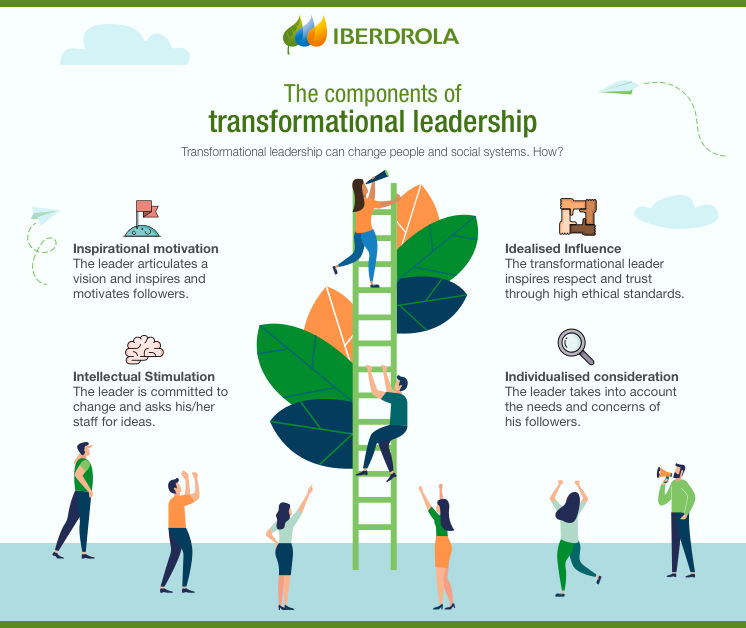Transformational leadership
Transformational leadership or how to drive change through people
Leadership Professional skills
There are many leadership styles in the workplace, but today one style stands out above the rest: the transformational, who aims to inspire and motivate employees, foster their creativity and drive their professional development. These leaders influence others and set an example, they transform companies and their members, who voluntarily follow the leader in pursuit of a common goal.

People change, society changes and professional environments change. Therefore, those who lead must also change. This means our leaders need to adapt, too. It is enough to look back to see that the managerial leadership style based on authority has little or nothing to do with today's style. Although at first glance it may seem that today's competitive and complex world of work requires leadership focused exclusively on achieving results, the truth is that 21st century companies are increasingly looking for leaders who know how to combine objectives and people. This is precisely where transformational leadership comes into play.
What is transformational leadership? Characteristics
In 1978, its creator, US historian James MacGregor Burns, defined transformational leadership as a leadership approach that changes expectations, perceptions and motivations of followers, as well as driving transformation within an organisation. According to MacGregor, for such change to occur, leaders and their followers need to agree on common goals in order to move forward together and achieve a higher level of motivation.
"Transformational leadership seeks to engage a person with others and create a connection that raises their level of motivation and morality"
Peter G. Northouse, expert in leadership
How to develop transformational leadership
Some years later, in 1985, MacGregor's concept was developed by researcher and psychologist Bernard Morris Bass, who addressed the components of transformational leadership — in the infographic — in his book Transformational Leadership. Based on these, we can define a set of characteristics that a person needs to develop this type of leadership:
Be a motivator. Able to create a motivating work environment, encouraging the growth of people, teams and the company itself around a common objective.
Be creative. Encourages and stimulates, through active listening, employees to think differently and to seek the best solutions for themselves and for the organisation.
Be a role model. In addition to charisma — sine qua non for all leaders — they must have values and a vision that makes them role models.
Be attentive. While promoting cooperation and teamwork, consider each employee individually, appreciating their contributions and creating trusting relationships.

Benefits of transformational leadership
The transformational leadership style is highly valued today for being one of those that best adapts to current characteristics and needs. In a working environment market by digital transformation, soft skills intrinsic to this type of leadership, such as change management and emotional intelligence, among others, take precedence over hard skills. In fact, the What Workers Want 2020 [PDF] External link, opens in new window., report published by British human resources consultancy firm Hays, confirms this: six out of ten companies consider that soft skills are more important than hard skills in employee personal development.
In addition to being one of the most suitable leadership styles for the current context, transformational leadership has other advantages. For the company, it improves flexibility, innovation, identity, profitability and productivity; and for employees, it boosts motivation, training, empowerment, involvement and self-esteem.
Examples of transformational leadership
If we look back over the recent history of the world, there are numerous examples of people who have transformed society through leadership. Among the most prominent are Emmeline Pankhurst, Mahatma Gandhi, Rosa Parks and Nelson Mandela, whose achievements in the fields of human and civil rights have benefited millions of people.
Today, the fight against climate change is one of the biggest challenges humankind has ever faced, for which we are looking to leaders committed to changing the future of the planet, such as the young Greta Thunberg. In the business world, there are figures like Steve Jobs, who insisted on encouraging and challenging his teams every day to create better products, Elon Musk, whose vision of the future inspires not only his team but huge numbers of people around the world, or, returning to climate action, Stella McCartney, who leads the textile industry's commitment to sustainability.




